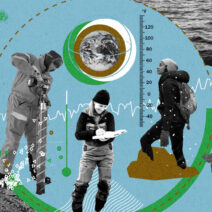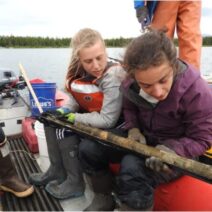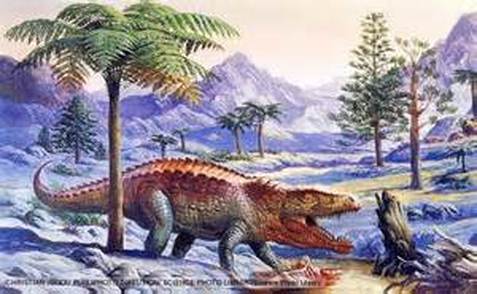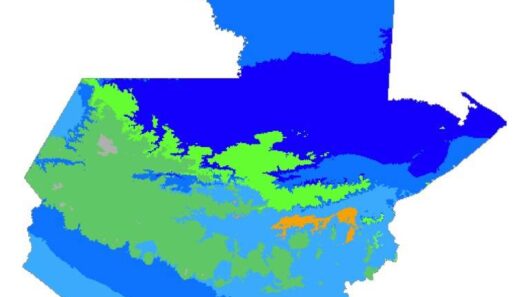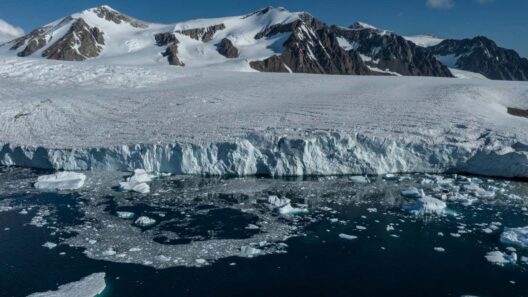The Triassic period, a remarkable epoch stretching from approximately 252 to 201 million years ago, marked the dawn of the Mesozoic Era. It is an era often overshadowed by its illustrious successors—the Jurassic and Cretaceous periods—yet it laid the groundwork for a breathtaking transformation of life on Earth. The climate during the Triassic period was as dynamic as the evolutionary innovations that transpired, characterized by fluctuations in temperature, moisture, and atmospheric composition.
At the outset of the Triassic, the planet was recovering from the Permian-Triassic extinction event, the most catastrophic extinction in Earth’s history. This cataclysm paved the way for significant climatic transitions, as life began its slow but tenacious rebound. The global landscape during this time was dominated by a vast supercontinent known as Pangaea, which profoundly influenced climatic conditions. Its enormous landmass created climatic extremes, leading to a diverse array of environmental niches.
The essence of the climate in the Triassic was succinctly encapsulated by stark contrasts. While the coastal regions basked in humid warmth, the interior of Pangaea experienced arid conditions reminiscent of the parched shouldered landscape of a desert. The core of the supercontinent was predominantly a dry expanse, lacking in significant vegetation, and often subject to wilting, sun-drenched heat. Thanks to the lack of ocean currents to moderate temperatures, extremes were not just common—they were the norm.
Temperatures soared during the Triassic, with equatorial regions often reaching broiling highs of around 40 degrees Celsius (104 degrees Fahrenheit). These blistering conditions were interlaced with periods of significant rainfall, particularly towards the latter part of the period. Early Triassic climates ushered in a new era that held promises of vibrant ecosystems burgeoning forth from the arid canvas of the landscape.
The flora that flourished during the Triassic epitomized resilience, adopting adaptations that allowed them to thrive in a fluctuating seasonal cycle. The dominance of gymnosperms—seed-producing plants like conifers—provided a stabilizing force in ecosystems often subject to drought. Remarkably, these plants, with their needle-like leaves and robust structures, stood tall against the unyielding climate, akin to sentinels guarding the legacy of life that would rise anew.
Meanwhile, the fauna of the Triassic underwent phenomenal diversification. Amphibians and the first reptiles flirted with evolutionary breakthroughs, giving rise to an enthralling panorama of life. Among them were the precursors to dinosaurs, whose emergence foreshadowed the biological explosion that would follow in the subsequent ages. This period witnessed reptiles adapting to the multifarious climates with a flair for innovation; from the nimble runners of the arid plains to the robust swimmers of coastal waters, each species was a testament to the adaptability of life.
Oceanic life, too, was transforming, with seas teeming with new life forms. The marine environment included ammonites and early ichthyosaurs, who thrived in the warmth of the shallow, sun-kissed seas, orchestrating an inconspicuous dance of survival against the backdrop of sprawling marine algae and plankton blooms. The oceans served as rich repositories of biodiversity, recovering from the devastations of earlier epochs.
However, the climate was not consistently favorable. As the Triassic progressed, evidence suggests the emergence of climatic instabilities, known as hyperthermal events. These episodes were highlighted by spikes in global temperatures and changes in carbon dioxide concentrations. Geochemical evidence points to increased volcanic activity, linked to the rifting of Pangaea, that released vast amounts of greenhouse gases. These events stirred the delicate balance within the atmosphere, leading to periods of severe warming, followed by episodic cooling, akin to a pendulum swinging between extremes.
The dynamic interplay between aridity and humidity fostered a unique interplay between life forms adapting to the often harsh conditions. Notably, the end of the Triassic was marked by another extinction event, believed to be precipitated by this climate shift, which once again reshaped life on Earth as the reign of dinosaurs dawned on the horizon.
The passage from the Triassic to the Jurassic signifies not merely a stratigraphic shift, but heralds the ascendancy of creatures that would dominate terrestrial ecosystems for millions of years. As ecosystems transformed under the dual pressure of climatic oscillations and evolutionary adaptations, the tapestry of life began to flourish, leading to the enthralling dinosaur age.
In essence, the climate of the Triassic period serves as a powerful reminder of the capriciousness of planetary systems. The interplay of various climatic forces illustrated an intricate dance of adaptation, competition, and survival. As life surged forth in its various manifestations, the stage was set for the grand theatrical performance of evolution. Balance was tenuous, adaptability was crucial, and the tapestry of life, woven under the aegis of climate change, illustrated a world at the threshold of monumental transformation.
As modern societies grapple with the pressing realities of climate change, the lessons drawn from past epochs, like the Triassic, become increasingly pertinent. Understanding how climates transformed and shaped diverse forms of life offers invaluable insight into the resilience and vulnerabilities of ecosystems today. The echoes of the past whisper as reminders that, in every shift of climate, there resides an opportunity for renewal, adaptation, and the flourishing of life.

